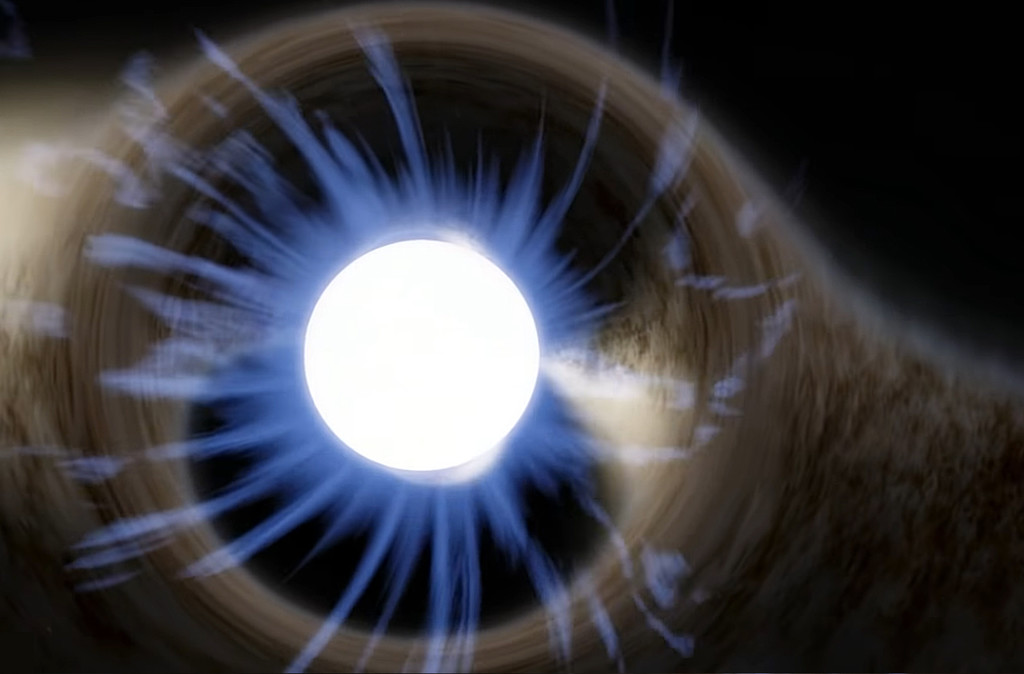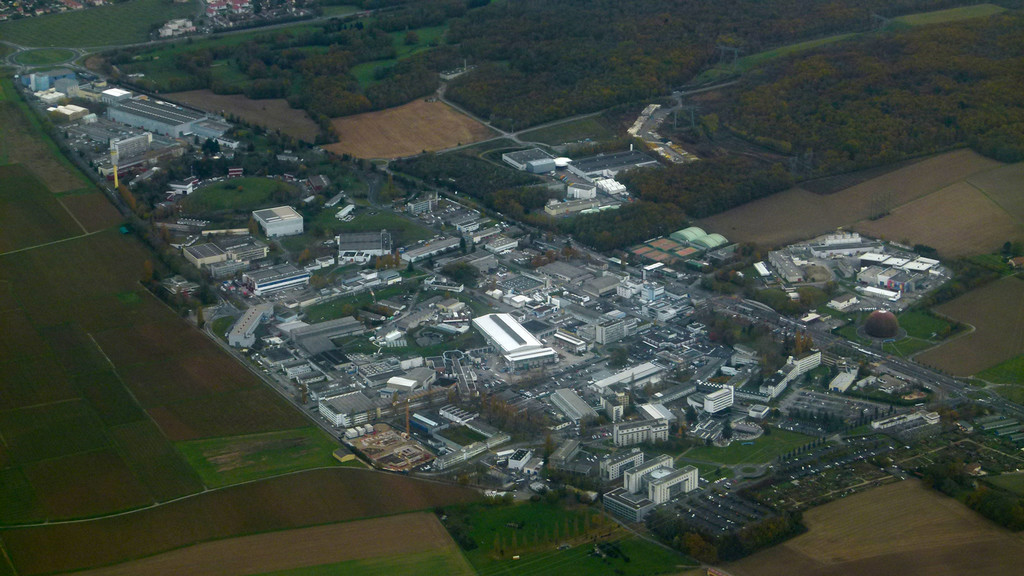There are three reasons that Astrophysicist believes CERN could destroy the Earth. Martin Rees is not your average astrophysicist (if you can be an “average” astrophysicist). This British cosmologist has been president of the prestigious Royal Society of London, rector of the no less reputable Trinity College, and serves as Emeritus Professor of Cosmology and Astrophysics at the University of Cambridge. In addition, if his resume is not impressive enough, he has held the honorary title of Astronomer Royal since 1995, which places him on the same path that other famous astronomers, such as Edmund Halley or Sir Harold Spencer Jones, have walked before him.
During his career he has studied such exciting and complex phenomena as the role that dark matter can have in the formation of galaxies, the existence of gravitational waves, the formation of black holes or how quasars are distributed far and wide. of the universe. He has also published several hundred scientific articles and nine popular books. This article is dedicated to the last of them. And it is that in a chapter of ‘In the future: perspectives for humanity’ Rees raises the possibility that the experiments we are currently carrying out in particle accelerators; CERN could destroy the Earth . Or even the entire Universe.
During his career, Martin Rees has studied such complex phenomena as the role that dark matter can have in the formation of galaxies, gravitational waves or the formation of black holes.
Only a handful of scientists can afford to write something like that in a popular book and come out unscathed. Martin Rees is one of them. He approaches this idea by relying on the approaches of other scientists, but by explaining these theories in his work as he does, he gives them at least minimal credibility. And for this reason they are worth investigating, but only as a curiosity with scientific ambition . Without worrying us in the least. And it is that in the last section of the article we will see what Javier Santaolalla thinks about these ideas, a Spanish doctor in particle physics who participated in the CERN experiments that led to the discovery of the Higgs boson.
A voracious black hole capable of devouring everything
The relationship between these additional spatial dimensions and the gravitational pull Martin Rees is talking about is not clear because his explanation in the book is very brief. In all probability its brevity is due to the fact that the physics on which the superstring theories that theoretical physicists currently propose are built is extraordinarily complex. In any case, the really interesting thing is that Rees gives visibility to the possibility, predictably minimal, that the reinforcement of gravity caused by these extra spatial dimensions causes a particle in very specific conditions to implode, giving rise to a black hole presumably tiny, at least in its early stages.
Earth could transform into a huge strangelet
The quarks are fundamental particles interact with each other to form subatomic particles like protons or neutrons, which are, in turn, particles that can be found in the nucleus of atoms. As an example, a neutron is made up of one up quark and two down quarks , which are held together by strong nuclear interaction. The most surprising characteristic of foreign matter is that it is not made up of the protons and neutrons with which we are familiar because it is subjected to such a high pressure that these particles are dissociated into their constituent elements, which, precisely, are the quarks of which we have spoken a few lines above.
If a strangelet comes into contact with the nucleus of an atom of ordinary matter it could transform it into strange matter
At the same time, the enormous pressure to which these fundamental particles are subjected causes them to be very close together, causing the foreign matter to have an enormous density. An interesting feature of this form of matter that has been described by theoretical physicists is that it is more stable than ordinary matter that we are all familiar with, which is made up of protons, neutrons, and electrons. Interestingly, some astrophysicists are convinced that the interior of some neutron stars is under such high pressure that the neutrons could appear dissociated in the form of strange matter. A startling fact: the density of a neutron star it is such that a “die” of a cubic centimeter would weigh a billion tons.

We already have some intuition about the nature of foreign matter, so we can go back to our strangelets , which, as we saw at the beginning of this section, are the constituent elements of this form of matter. What some physicists postulate, and Martin Rees collects in his book, is that if a strangelet comes into contact with the nucleus of an ordinary matter atom, it could transform it into strange matter , releasing a large amount of energy and more strangelets in the process . The latter would presumably be thrown in all directions and when in contact with other atomic nuclei they would produce a chain reaction that would transform ordinary matter into foreign matter.
Rees echoes the hypotheses defended by some physicists that describe the possibility that the collisions of particles that we carry out in accelerators under certain circumstances give rise to the appearance of strangelets . And these when coming into contact with the ordinary matter of which our planet is made (and also ourselves) could transform the entire Earth by contagion into a hyperdense sphere of strange matter.around 100 meters in diameter. Imagine the entire mass of our planet compressed to such an extent that it is confined to such a small sphere. It certainly doesn’t seem like a nice thing. Fortunately, it is only a hypothesis that, as we will see in the last section of the article, has been dismantled by many more physicists than those who defend it.
A phase transition could tear the space-time continuum
The instability of the vacuum in certain circumstances caused by the collision of the particles in the accelerators could cause the space to change phase suddenly
During his explanation he further develops the analogy of space and water by describing the possibility of supercooling water beyond the temperature at which it freezes. However, this is only possible if the water is totally pure and perfectly still. Any disturbance, no matter how small, would cause the water to leave this supercooling state and return to the form of ice. Something similar could happen with space. The fragility and instability of the vacuum in certain circumstances caused by the collision of the particles in the accelerators could cause space to change phase suddenly , thus tearing the space-time continuum and giving rise to a catastrophe that would not only affect the Earth, but perhaps the entire Cosmos. CERN could destroy the Earth and other planets around the Earth.
All this is of theoretical interest, but we don’t have to worry
However, we do not have to go back to the ends of the galaxy to reinforce this argument. Those same high-energy cosmic rays are constantly striking the atomic nuclei in our planet’s atmosphere and it is clear that they have not caused the formation of black holes or strangelets , nor the breakdown of the space-time continuum. In any case, to investigate a little more about this matter and clarify it as much as possible, we have spoken with Javier Santaolalla, a Spanish Ph.D. in particle physics and telecommunications engineer who has worked in some of the most respected scientific institutions, such as the French Space Agency, CIEMAT or CERN. In fact, within the latter organization he was part of the team of physicists that made the discovery of the Higgs boson possible in 2012 .
Javier’s first explanations, as expected, are deeply reassuring: “Martin Rees speaks of very unlikely and exotic theories . In his description there is a lot of speculation because all the scenarios he raises are very strange. We can be sure that the collisions we carry out in particle accelerators are safe if we look at cosmic rays. They are much more energetic than the shocks that we are producing now and those that we will produce in the future, and we have not observed that any planet has collapsed or disappeared due to the action of these very high energy particles.
‘Martin Rees talks about very unlikely and exotic theories. We can be sure that the collisions we carry out in particle accelerators are safe if we look at cosmic rays »
In addition, Javier points out several very interesting ideas that undoubtedly enrich this discussion: «One theory has even predicted that the Higgs field could be shaped in such a way as to give rise to a tunnel effect capable of tearing the Universe apart. To me personally, as an experimental physicist, these theories make me think that we are so lost about how we should advance our understanding of fundamental physics that strange ideas like these appear. I believe that the Universe is simpler than all that, and I defend that the theory that will come later will not introduce such speculative and strange ideas ».

Before concluding my conversation with Javier, I refused to miss the opportunity to ask him if during his stay at CERN he had ever spoken with a veteran physicist about the possibility that the experiments they were carrying out could lead to an accident. «On one occasion during my stay there I spoke with a veteran physicist and he recognized that hypothetically, in some very particular scenario, even taking into account the cosmic rays, some unwanted effect could be produced. But again it is a hypothetical approach that is based on a very particular scenario, ”Javier recalled.
And he concluded his explanation noting: «These ideas arise on paper to propose something that could hypothetically be possible, but in practice it is very likely that they are not correct. Furthermore, even though they are correct, they must face the improbability of the appropriate circumstances for that effect to take place. For these reasons all this sounds more like science fiction than science. The LHC will continue to function; it will continue to carry out collisions without a problem and the world is not going to disappear because there is no plausible evidence that we need to worry about. Above are the predictions by different Astrophysicist that CERN could destroy the Earth.

